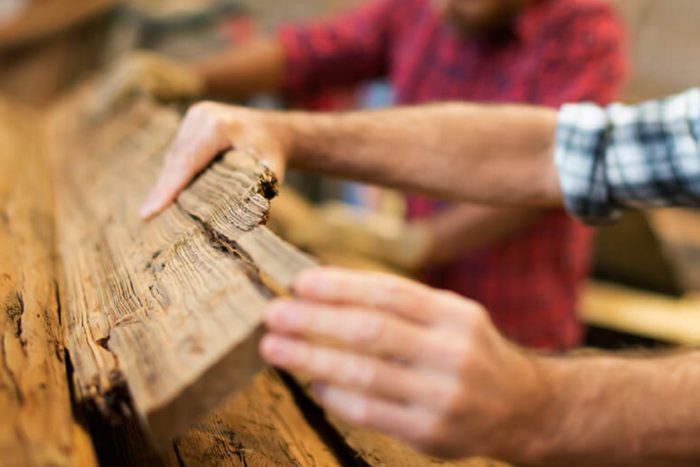Identifying Wet Rot
By Wirral Waterproofing
In our last blog entry, we talked about dry rot, its effect on a property’s timbers, and how you can identify its presence in your home. Today we’re looking at wet rot – another type of fungal infestation that can affect domestic properties across the Wirral.
Identifying Dry Rot
At Wirral Waterproofing, we have been treating dry rot across the peninsula for decades. In this article we explain what dry rot is, how it spreads, and how to recognise when you have it in your home.
30 June, 2021
What Is Wet Rot?

Unlike dry rot, there are various types of fungus that fall under the catch-all term of wet rot – though the most common of them is coniophora puteana, or cellar fungus. These fungi are attracted to very damp wood and can be found in household timbers that have a moisture content of around 30%-50%. Dry rot feeds off the timber itself, breaking down and absorbing the cellulose that holds the wood together. While it does not spread in the same way as dry rot, it can still prove destructive.
Causes of Wet Rot

All wet rot needs to thrive is a moist environment and a ready supply of cellulose. Therefore, anywhere that water has managed to enter your property – be that via a leaking roof, burst pipe, or any other method – can be a potential source point for wet rot.
Identifying Wet Rot

If you are unaware of a leak in your property, you probably won’t notice the presence of wet rot straight away. It often presents itself in poorly-ventilated and hidden areas, such as cellars, attics, roof spaces, and under floorboards and stairs.
These are some of the more common indicators:
– timber that is damp to the touch
– dark brown staining on the timbers
– damp, musty smell
– you can easily break apart the timber with a screwdriver
– a soft, spongy feel to the timber
– the timber crumbles and cracks when dry
– timber shrinkage
– damaged or flaking paint
Treating Wet Rot

For effective treatment of wet rot, you need the assistance of trained professionals, like the team at Wirral Waterproofing. Wet rot treatment is a two stage process:
First, we have to identify and eliminate the source of the moisture, whether that involves repairing a leaking pipe, fixing a broken window seal, replacing a missing roof tile, or anything else. After the water ingress has been stopped, the wet rot will no longer be able to grow.
Once the timber has had a few days to dry out, we can examine the wood to figure out the extent of the damage. If the structural integrity of the wood has been compromised, we will need to remove and replace the affected timbers. We then coat these, and any nearby woodwork, with a fungicide to prevent future infestation.
Your Local Wet Rot Specialists
If you think you have wet rot on your property, give Wirral Waterproofing a call. Contact us on 0800 334 5534 and arrange for one of our experts to perform a full wet rot survey on your property.



